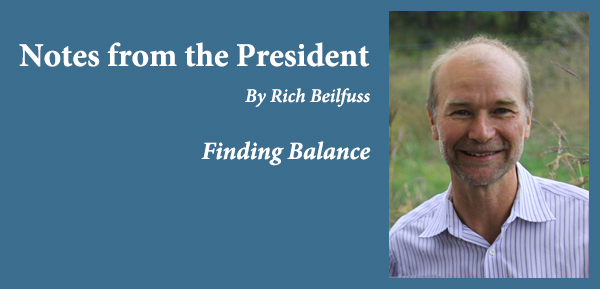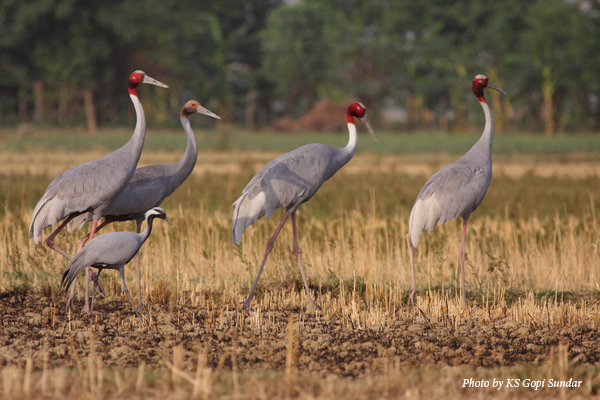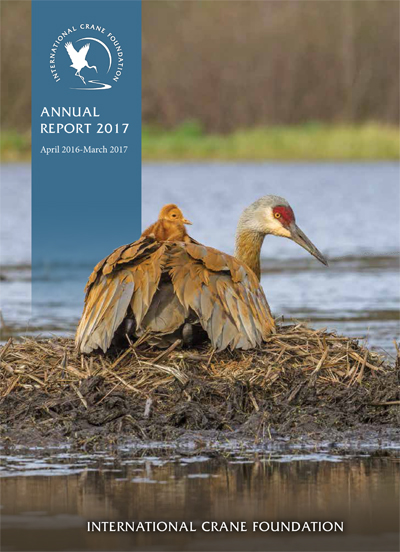
I ride a unicycle and often find myself thinking about balance. I’ve learned I can do all sorts of surprising things when firmly balanced on one wheel… playing hockey, riding marathon distances, or winding down a mountainside on bumpy dirt trails. Conservation is likewise about finding balance in challenging circumstances – that elusive balance that results in win-win solutions for people and wildlife and thereby builds broad public support for conservation.
For 44 years, the International Crane Foundation has worked in some of the poorest places on Earth, like the farmlands of East Africa and South Asia and in some of the most rapidly developing places, like northeast China and the coast of Texas. Across all these lands, we have learned that genuine conservation solutions require realism and pragmatism, and good ideas emerge from the left and the right of the political spectrum. In some places, our work has led to strictly protected areas. In other places, we’ve helped communities successfully market natural products to improve their livelihoods.

This October, I traveled to Namibia to share lessons from our longterm experience leading environmental flows initiatives around the world. Environmental flows describe the quantity, timing, and quality of water flows required to sustain freshwater and estuarine ecosystems and the human livelihoods and well-being that depend on these ecosystems. We are working to implement environmental flows in places as diverse as northeast China, coastal Texas, and southern Africa. Our work in the Zambezi River Basin, for example, has taught us that healthy, well-managed rivers can support rich biodiversity while providing a host of valued natural resources and supporting resilient livelihoods and sustainable economic growth. The seasonal ebb and flow of the Zambezi is essential to meet the breeding, feeding, and roosting requirements of Wattled Cranes, Saddlebill Storks, Kafue Lechwe, and many other species, and give rise to productive fisheries, agricultural fields, and grazing lands. At the heart of every successful environmental flows project is the need for balance – a balance between people and wildlife, between the demands of upstream and downstream water users, and between the contrasting world-views of river engineers and river ecologists.
Back at home, we’ve been reaching out to political leaders to provide a balanced perspective on the policies and regulations that wildlife most depend on. We know that the Endangered Species Act isn’t perfect, but it remains our most powerful tool for biodiversity conservation. We know that not every wetland is created equal, but many wetlands are invaluable for fish and wildlife and for storing and purifying our waters. Regulations protecting wetlands and clean water help us safeguard these values for today and tomorrow. To keep our abundant Sandhill Cranes flourishing on farmlands, we must find new ways to counterbalance their impact on the farmers’ bottom line. We are working with state representatives across the political spectrum to help compensate farmers for their investment in Avipel, the non-toxic seed treatment we helped develop that prevents cranes and other wildlife from damaging new corn seedlings without harming them.

To read more about how we promote balance in all our work, I am pleased to announce the publication of our 2017 Annual Report. I hope you will enjoy this collection of highlights from 2016-2017. More importantly, I hope you are proud of the investment you’ve made. We are diligent with your investment, as demonstrated by our recent achievement of GuideStar’s 2017 Platinum Seal of Transparency. GuideStar is the world’s largest source of information on nonprofit organizations. We are steadfastly committed to operating at the highest standard, so we can make the greatest difference for cranes and the places where cranes dance. Thank you for trusting the International Crane Foundation to bring you a balanced perspective.
